A cheeky London weekend
- Andrea

- Oct 3, 2024
- 8 min read
Updated: Apr 22
Background to the cheeky weekend
This post covers the weekend I spent in London in 2015, in the middle of two weeks of filming interviews in Singapore, Paris, London, Portsmouth and Birmingham for a work project. All that sounds rather glamorous but it was actually completely exhausting! I was glad of the weekend for some downtime. You can read about the work project experience here.
My London wanderings documented in this post represent my fifth experience of the city. See the posts on my 1996, 2011, 2013, 2014 and 2018 London wanderings for more on my experiences of this iconic city.
I've posted a summary of my London weekend experience at the end and my reflections on what that weekend meant to me.
London wanderings day 1
I was staying in the Travelodge in Vauxhall with my two work colleagues for the 10 day England part of the work project trip. The three of us decided to go our separate ways over the weekend in the middle of the trip. I must admit that it was nice to take a break from the intensity of the three of us rushing about to film a bunch of interviews for our work project.
I had arranged to meet up with my friend, KP, on Saturday. She had been living in London for my previous four visits (links to posts above), although on holidays in Morocco in 2014 so I hadn't seen her since my 2013 trip. By 2015, KP had relocated to Southbourne, near Chichester. We’d arranged to meet at Waterloo station mid-morning, so I had some time to myself to wander around first.
I love rivers and although the Thames itself isn’t the prettiest, the pathways that line both banks are beautiful and provide fabulous views of many iconic structures. You can see from my photos that it was a grey start to the day as I wandered from Vauxhall to Westminster Bridge and across the river to Big Ben.
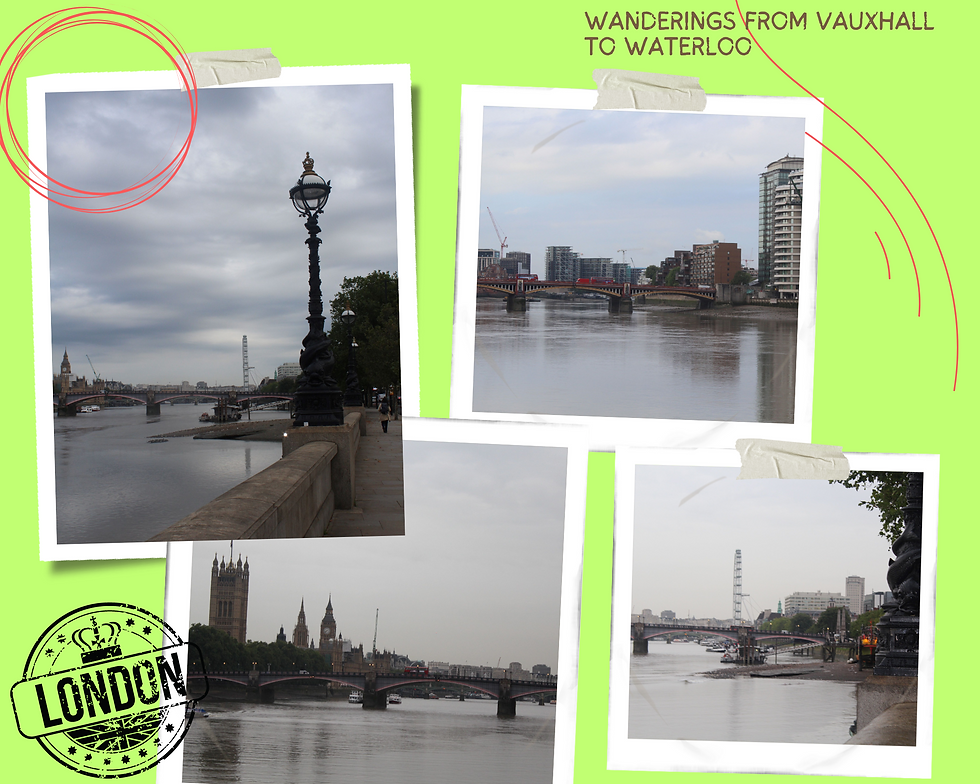
I had a poke around the Westminster Abbey gift shop (one of my favourite things to do is browse gift shops…) and spotted the Emmeline Pankhurst statue before heading back over the bridge to meet K at Waterloo.

KP and I caught up over coffee at little place near the station and then headed off for our day together. Each time I’ve been in London – this being my fifth visit – I've loved wandering the streets, absorbing all the history and the beauty of the green spaces.
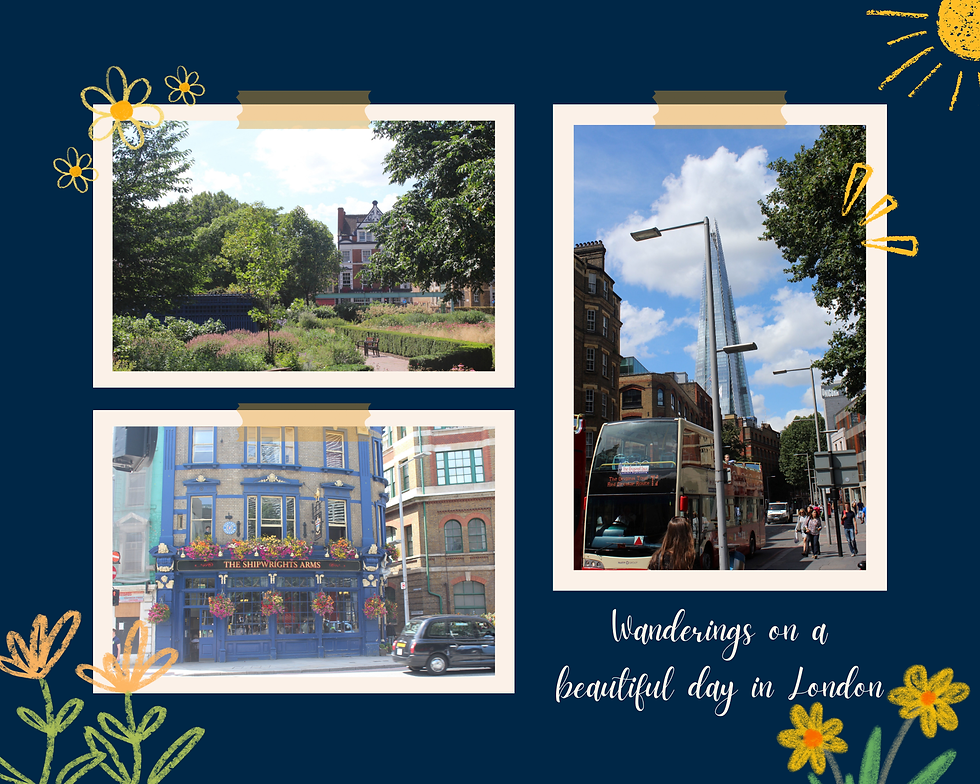
There is something about London that I connect with, despite its grime and rubbish weather. As I write this blog in 2024, nine visits in, I feel privileged to have experienced so much of the city. Each visit I have added more iconic experiences to my kitbag!
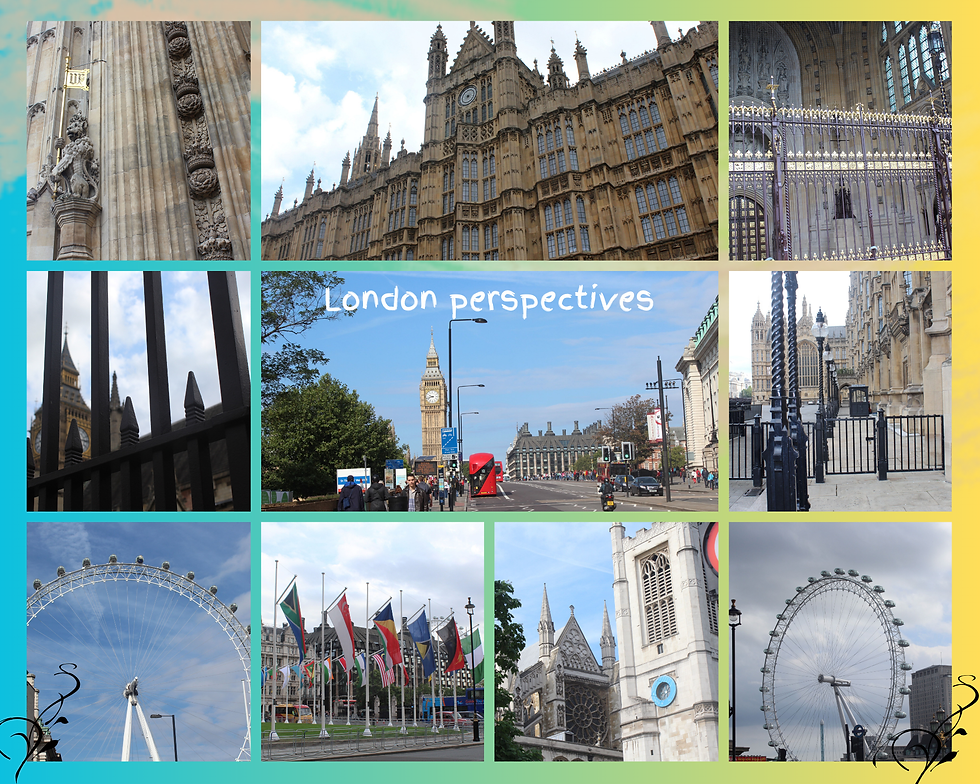
Day 1 of my free time on this work trip saw KP and I experience two key London structures. The first was the Tower Bridge, built in 1894. When I experienced the Tower Bridge, I mean we walked onto it but we also paid the entrance fee for the Tower Bridge Experience. At the time of writing this post, tickets were £16.
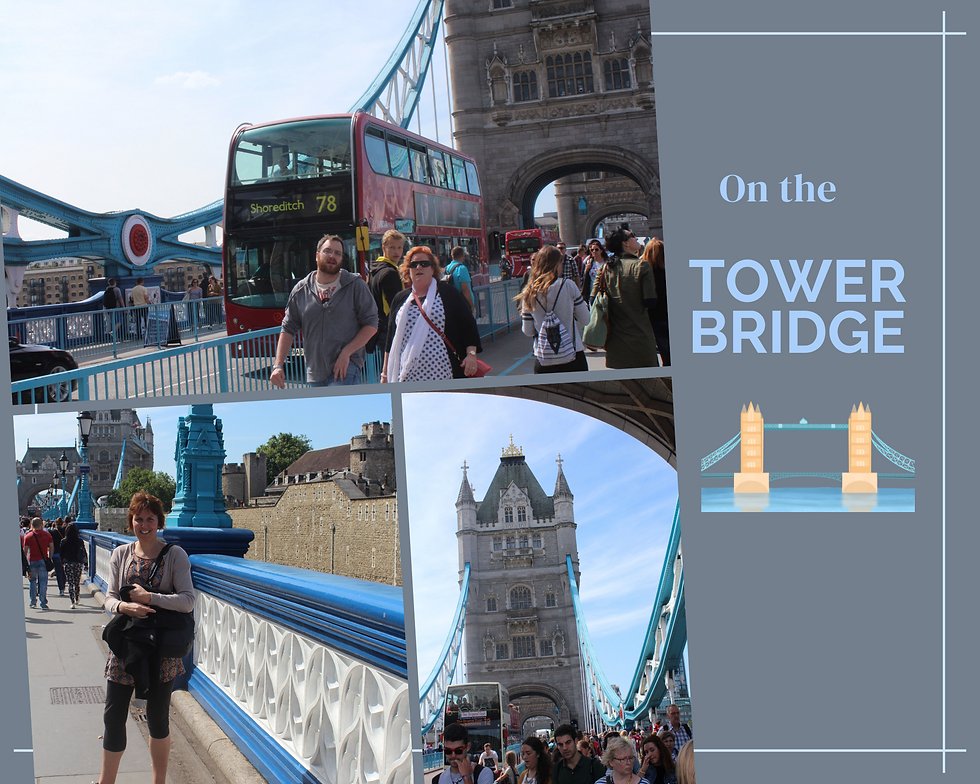
I highly recommend the Tower Bridge Experience as it’s super cool to walk inside the towers and see the workings of the bridge. There are walkways that connect the North and South Towers, where you can spot some of the 13 million rivets that hold the bridge together. There’s also the Glass Floors viewpoint, some 42 metres above the Thames and 33.5 metres above the bridge/road level.
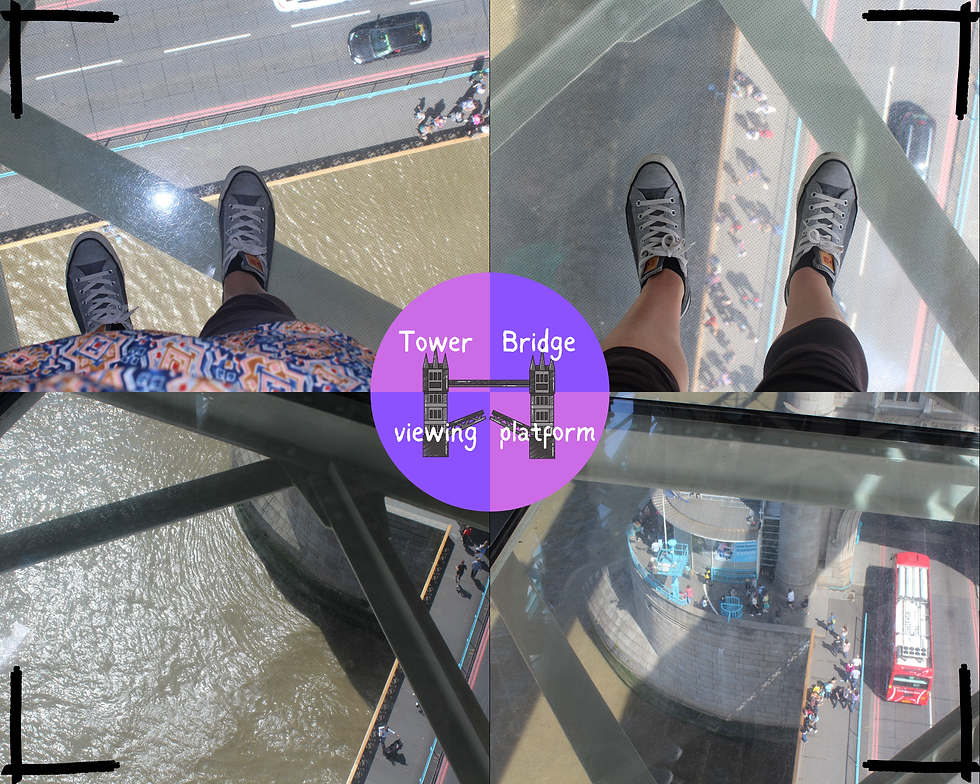
The viewpoint allows you to see the vehicular and foot traffic on the bridge. The Walkways provide stunning panoramic views out across London. As you can see from my photos, the weather was kind to us during our visit so that made the views even better.
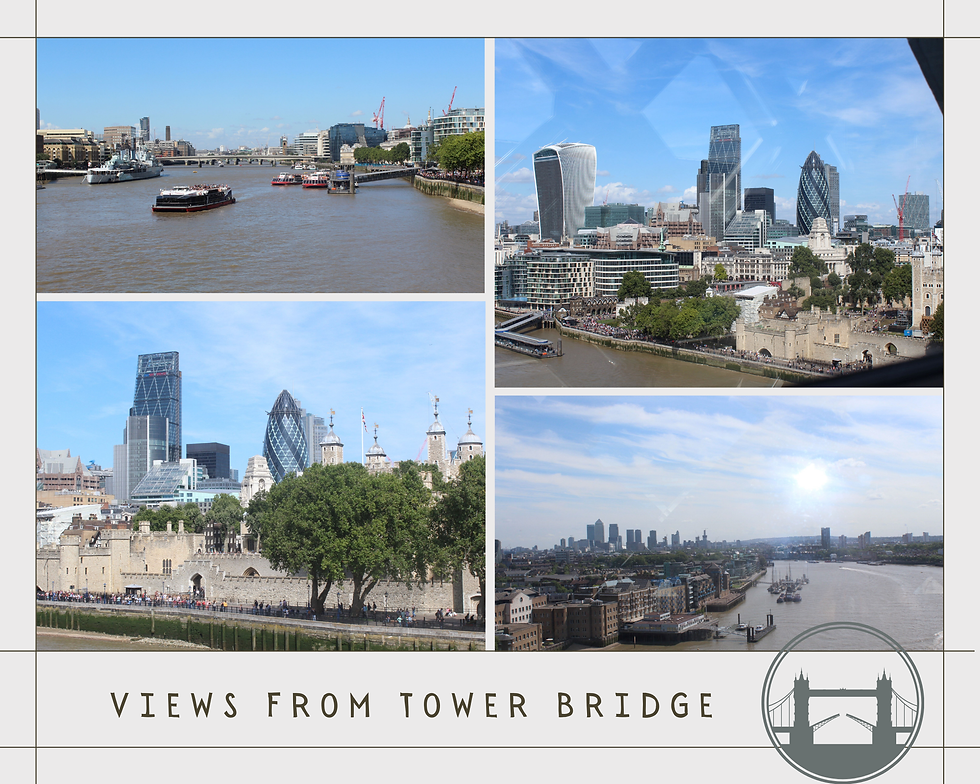
The Engine Rooms are interesting, too, where the architecture, construction, and history of the bridge’s operation are on display.
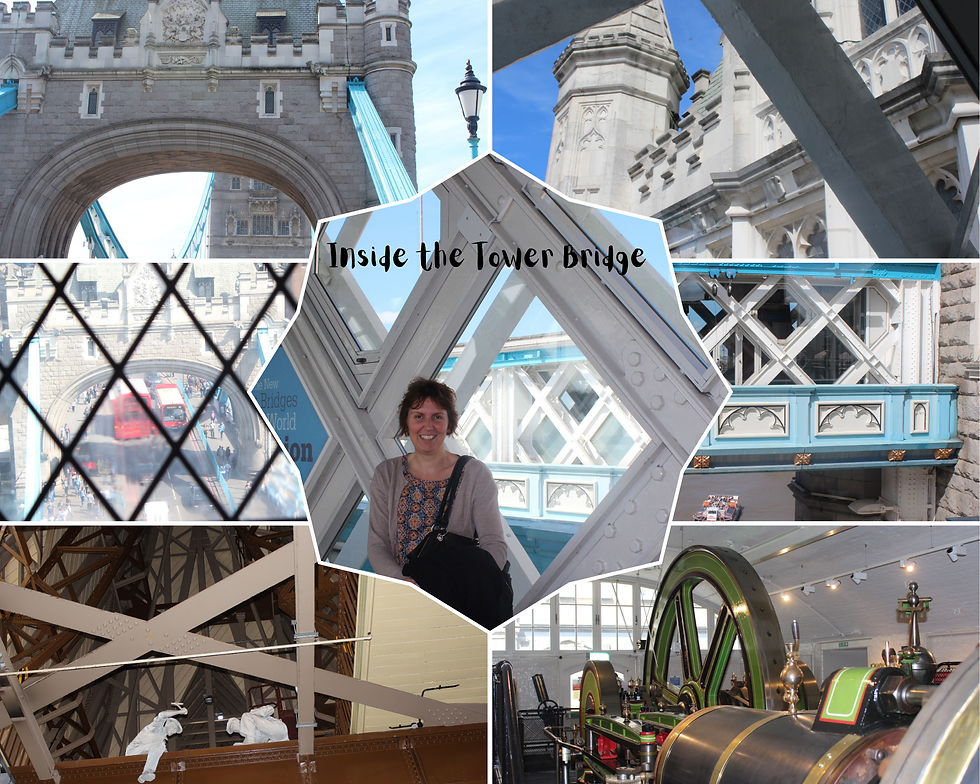
We had a burger for lunch at this cool outdoor café under the bridge then we headed to Monument, the second iconic experience of the day. The Monument stands at the junction of Fish Street Hill and Monument Street and was built between 1671 and 1677 to commemorate the Great Fire of London. The Monument was designed by English architects, Sir Christopher Wren, who also designed St Paul’s Cathedral, and Dr Robert Hooke, who designed the Royal Observatory Greenwich.
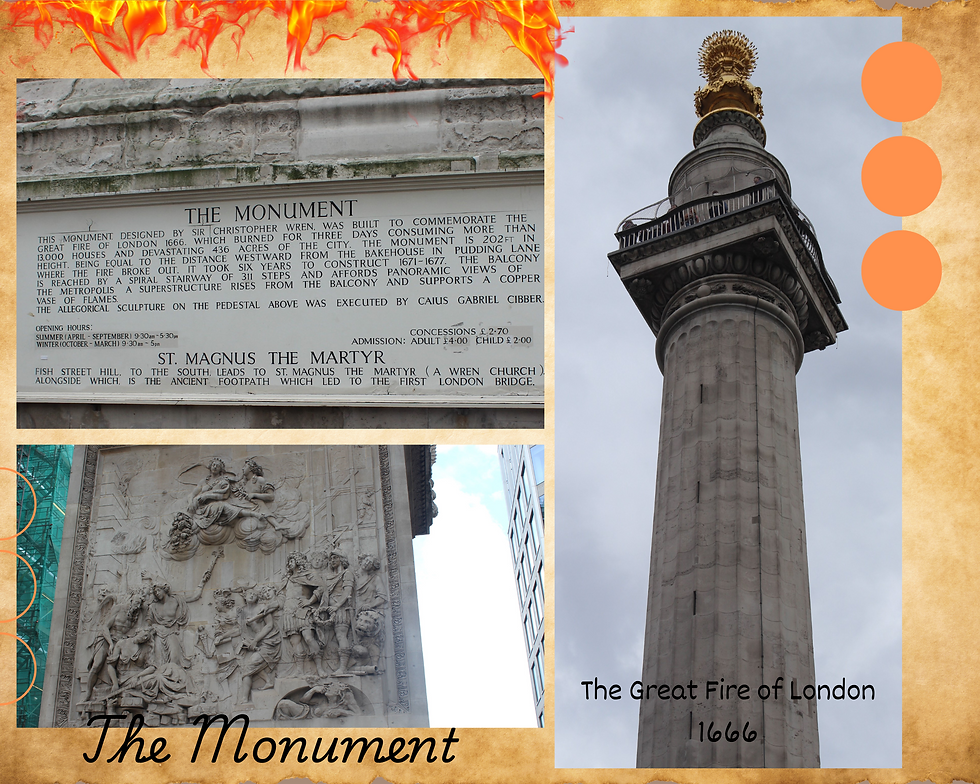
The fire on 2nd September 1666 began in a baker’s house in Pudding Lane and raged for three days. It destroyed a big part of the city although there was thankfully little loss of life. There was a massive amount of damage to houses, hundreds of streets, the City’s gates, public buildings, churches and St. Paul’s Cathedral. The only buildings to survive in part were those built of stone, like St. Paul’s and the Guildhall.
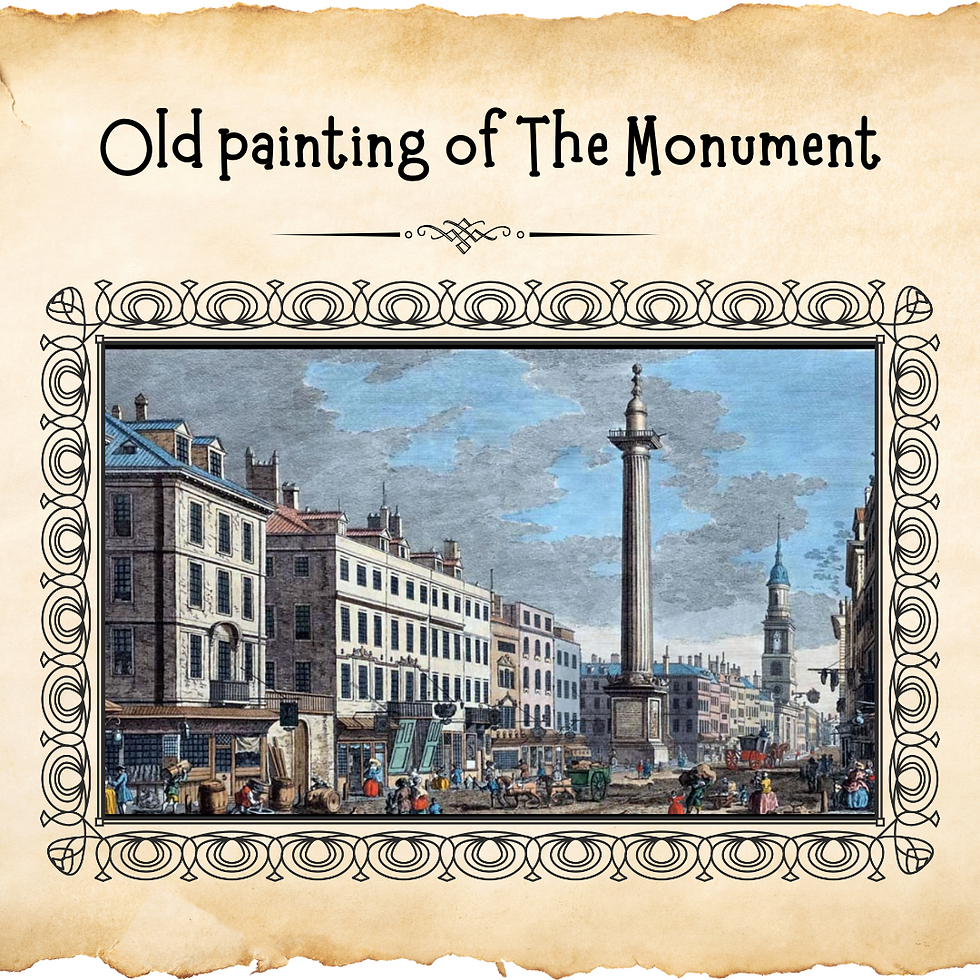
The Monument stands 62 metres tall and there are 311 steps to climb to the top up a spiral staircase that winds around the entire structure’s interior. The 360 views from the top are breathtaking! he Monument is a must-do London experience, I think. It’s easy to get to as it’s close to Monument Tube station.
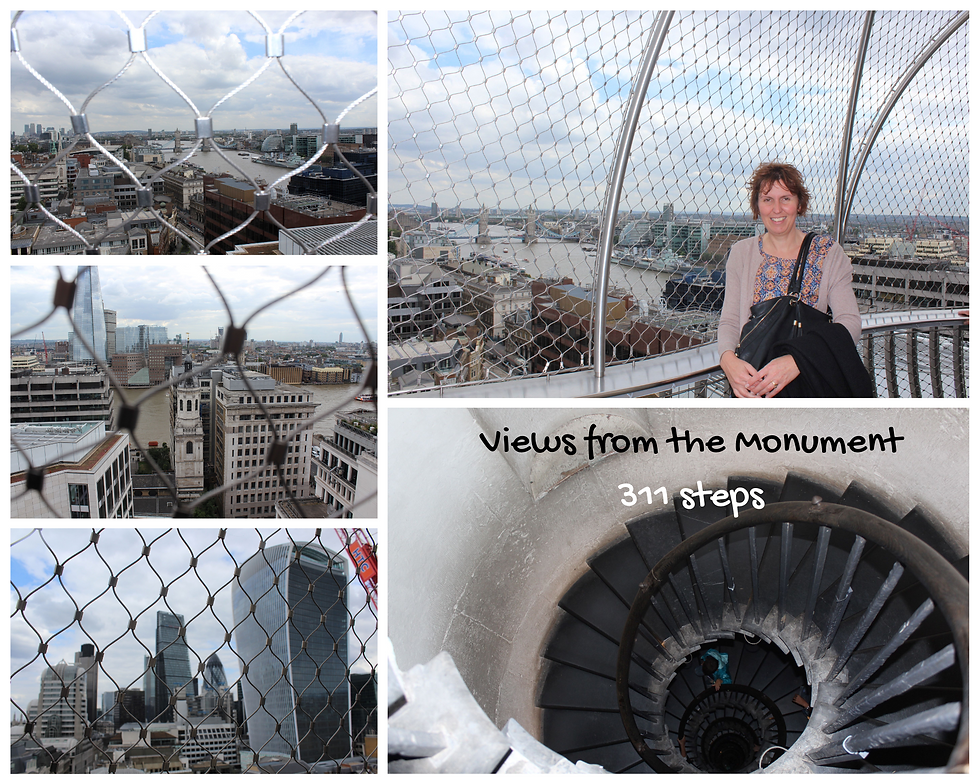
KP and I separated for a few hours in the afternoon as she had to connect with her friends who were accommodating her overnight. I’d been reading about the regeneration of Shoreditch, so I took the opportunity to explore the area located in the Borough of Hackney in London’s East End.
Shoreditch has a long history as an entertainment centre and was home to Elizabethan theatre in the sixteenth century. The area was heavily bombed during WW2. There was a major decline after the war, due to the destruction of housing during the Blitz and the closing of textile and furniture industries. These days loads of money has been poured into the area and it’s experienced something of a gentrification (‘hipsterfication’). Shoreditch is quite trendy these days, in an eclectic kind of way, as there’s a mix of creative and technology industries in the area now.
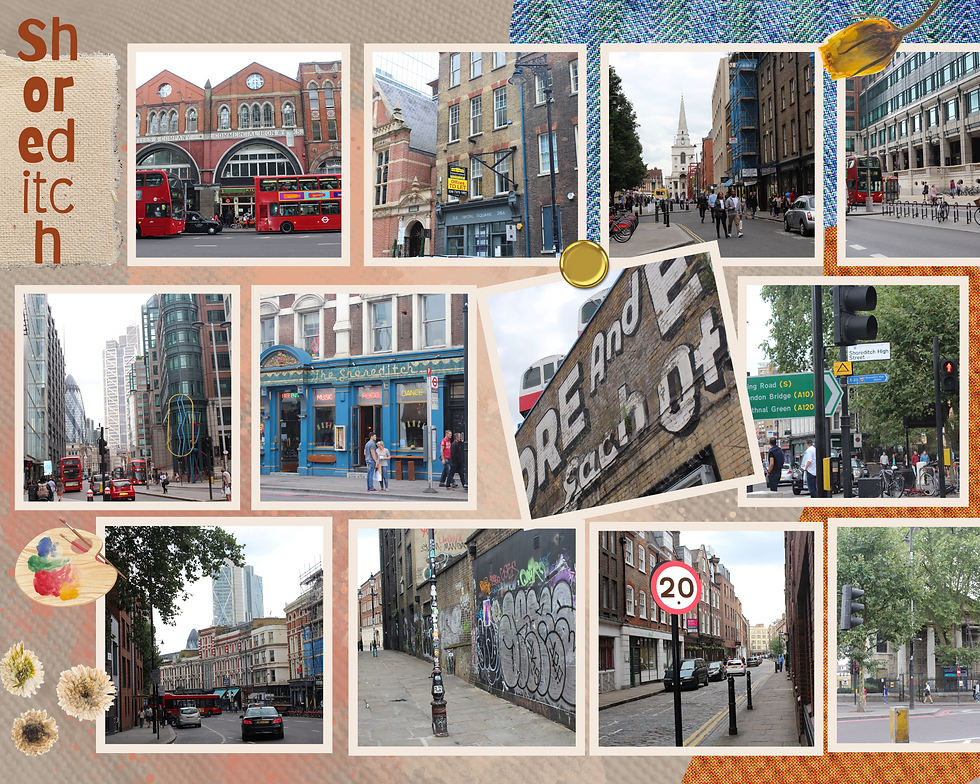
KP and I met up again later in Camden Town, continuing my exploration of the eclectic and creative parts of London, where we had a lovely early evening wander around Regent’s Canal before dinner.
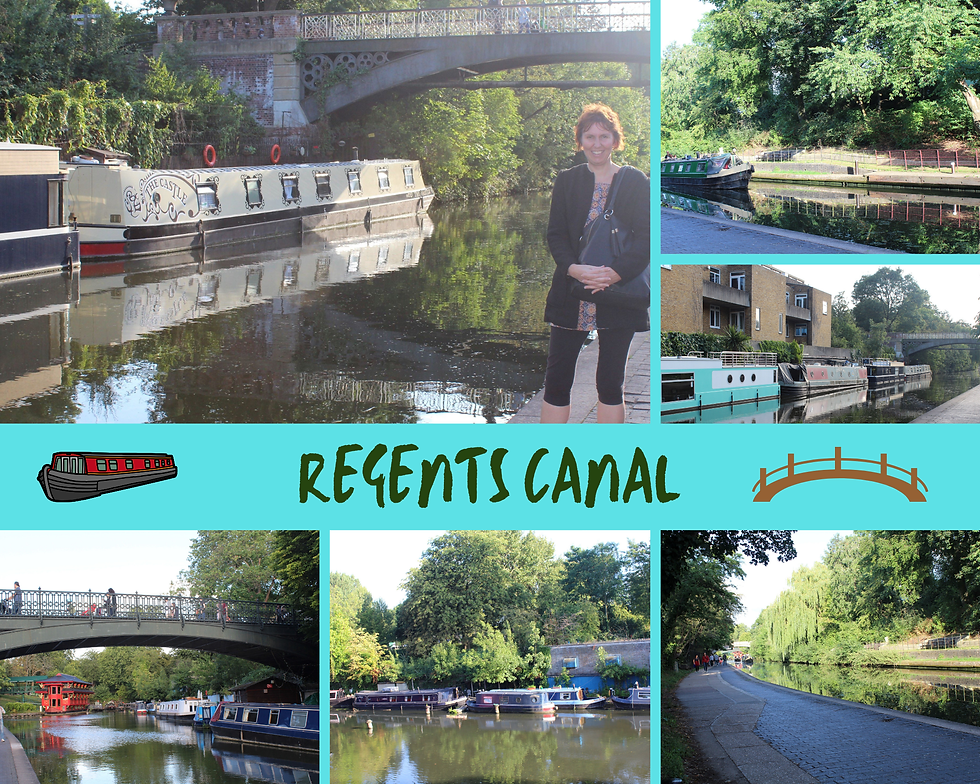
London wanderings day 2
My second free day of this work trip was spent with my friend, AD, who lives in Rochester in Kent. I’d seen AD the previous year when I was in London after presenting at the First-Year Experience conference in Nottingham. We met up again at Victoria Station and headed to our main activity for the day, Kensington Palace.
It was lovely to wander through the posh area from the Tube to the Palace. Seventeenth century Kensington Palace, probably most known now as the London home of the Prince and Princess of Wales and their three children, was once a small, suburban villa, known originally as Nottingham House. It was a retreat for reigning monarchs. I don't think the palace is super impressive architecturally, but I guess it's supposed to just be a home, even if for royal families. It looks more like a stately home than a palace.
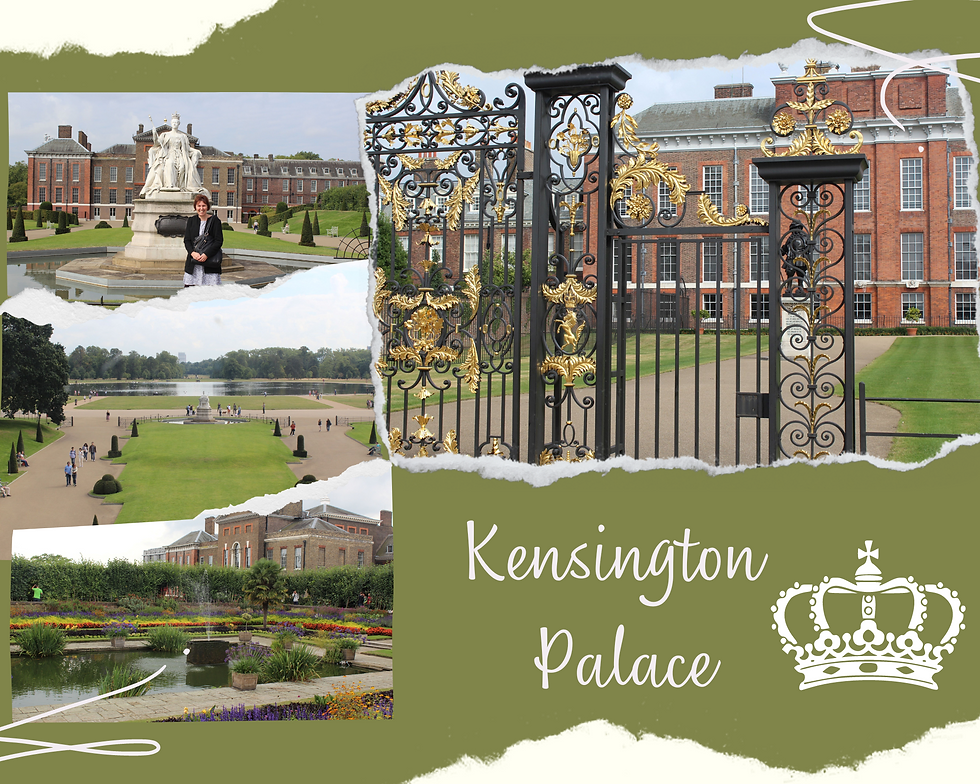
The front gate and the gardens are the best bits, although there are some cool rooms and exhibitions inside. We had a nice poke around the place and a lovely morning tea in the Palace café.
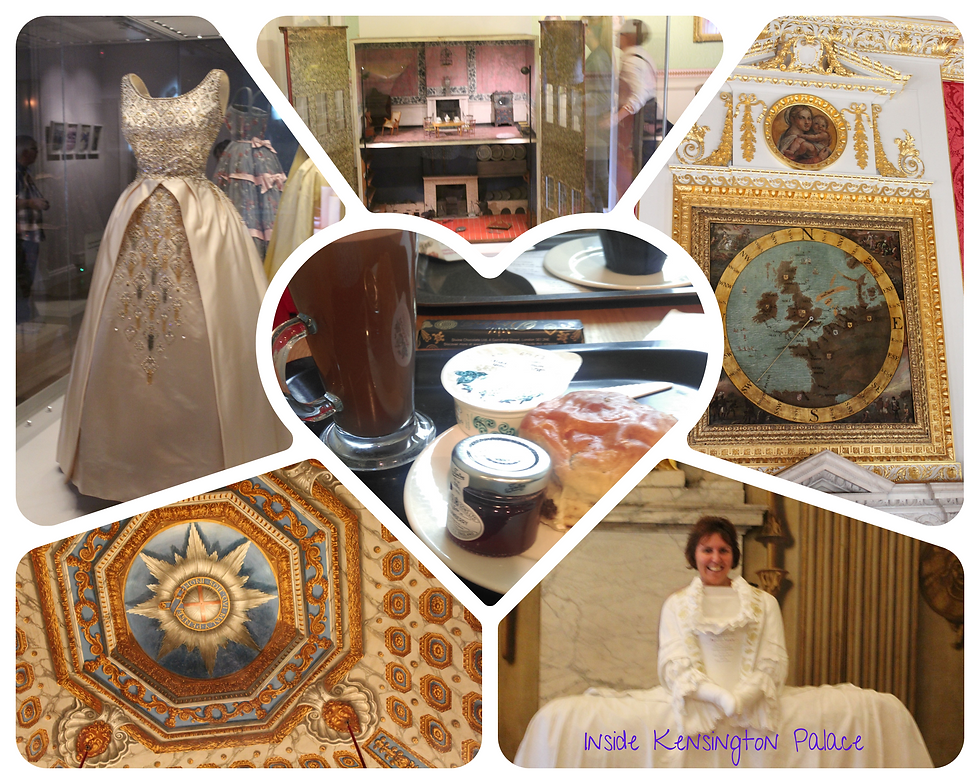
The palace blends seamlessly with Kensington Garden and Hyde Park. It’s a very pretty part of London and has strong links to Diana, Princess of Wales. There is a memorial fountain for Diana that was completed in 2004, made of 545 pieces of Cornish granite to a design that is meant to represent Diana and her life.
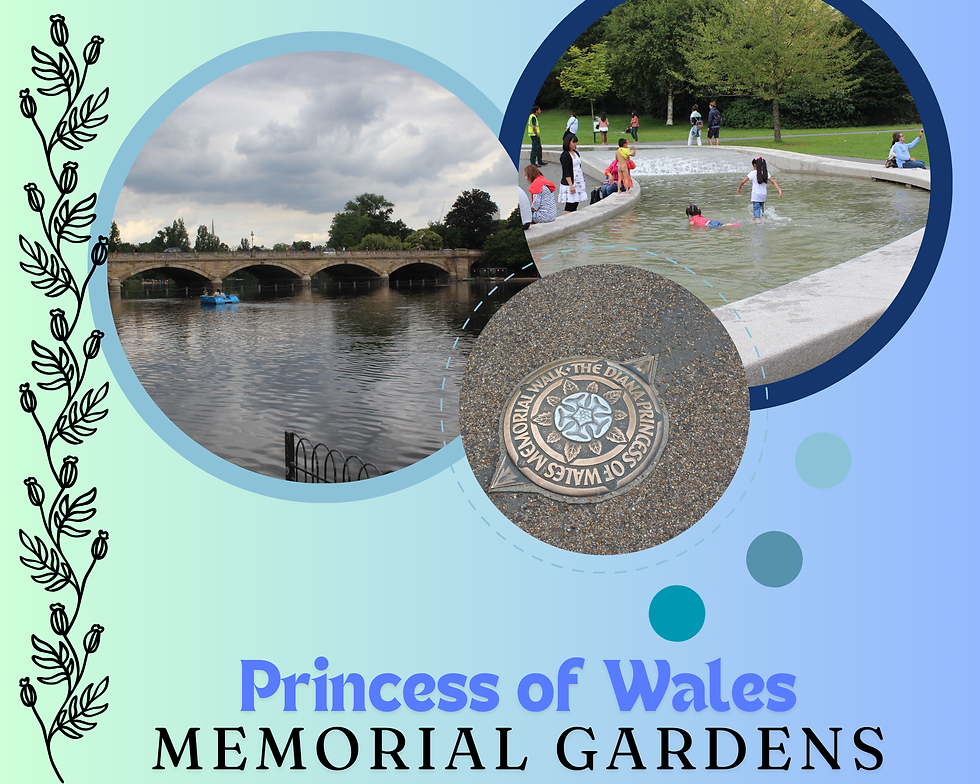
Royal Albert Hall (built in 1871) and Queen Victoria’s memorial to her beloved husband, Albert, (opened in 1872, 11 years after Albert’s death) sit on the outer edge of Kensington Gardens. You can see me in the below picture in front of Royal Albert Hall, a magnificent Grade 1 listed building. It has an 1850-square-metre glazed iron roof designed by the structural engineers and architects who built the rooves of St Pancras and Charing Cross stations. During the two world wars the roof was used as a navigation point for pilots. A mosaic frieze, The Triumph of Arts and Letters, encircles the building that contains 16 sections that showcase human accomplishments throughout history. Seven leading Victorian artists were commissioned to design the sections. Read here if you want to find out more about each section of the frieze.
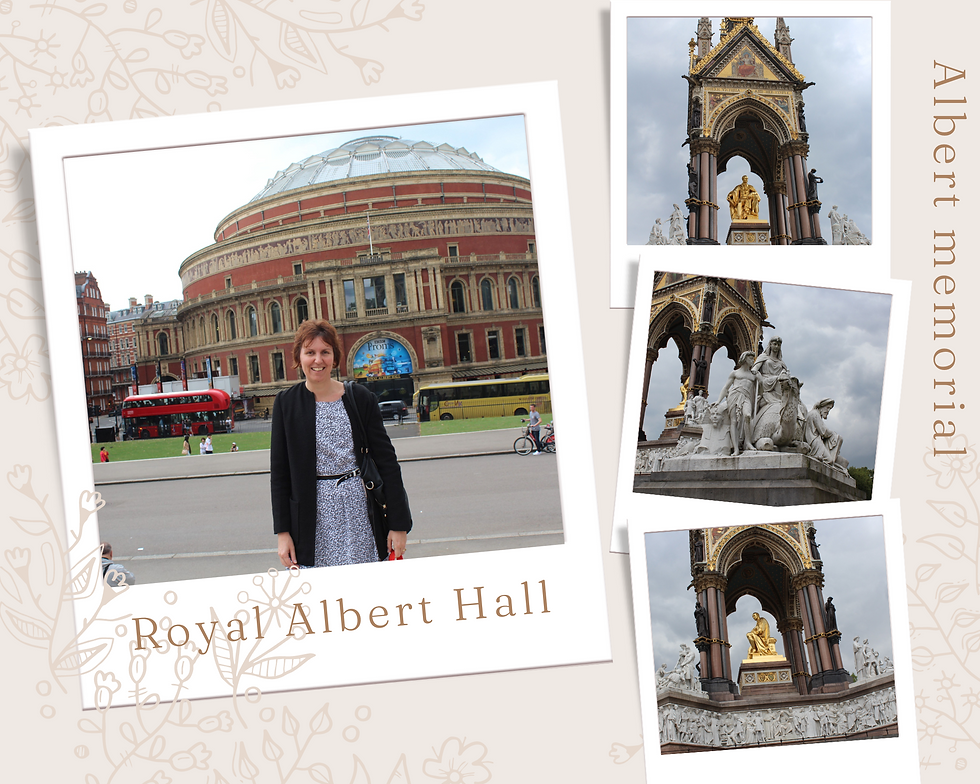
The other shots in the above collage are of the Albert Memorial. It’s styled as Gothic Revival, with an ornate pavilion standing 54 metres tall with a statue of Albert ceremonially seated underneath that was opened in 1876. The memorial has been Grade 1 listed since 1970. The central part of the memorial is surrounded by the sculptural Frieze of Parnassus which shows 169 composers, architects, poets, painters, and sculptors. The corners of the main part of the memorial showcase allegorical sculptures of agriculture, commerce, engineering and manufacturing and sculptures representing Asia, Europe, Africa and the Americas.
While I appreciate the depth of love Queen Victoria had for her husband and the incredible detail of the memorial, but it’s kind of…well…gaudy.
Lunch was at one of my favourite super cool eating places in central London, the café in the crypt of St Martin-in-the-Fields, adjacent to Trafalgar Square. I’ve eaten there few times, the first in 1996 during my very first visit to London. The café in the stunning crypt is lined by brick-vaulted ceilings and historic tombstones. Walking on top of the tombs with their ancient inscriptions is fascinating. Even if you don’t eat in the café, it’s worth a visit just to soak up the vibe.
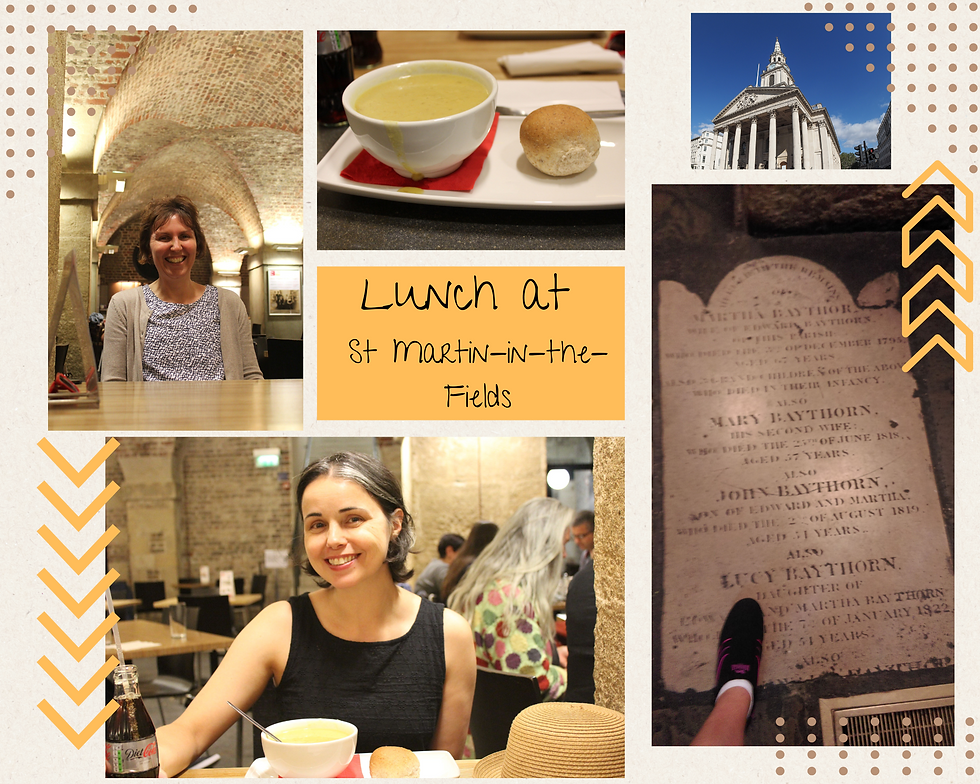
The St Martins current church was built between 1722 and 1726 and still stands as a visual anchor of the open space around Trafalgar Square. The site itself dates back to 350AD as a Roman burial ground. Historical records show reference to a church in 1222 that was rebuilt in 1542 by Henry VIII to house plague victims and rebuilt again in the eighteenth century when the walls and roof were found to be in a state of decay.
The rest of my afternoon with AD was spent at the British Museum, my second visit to the Greek revival façade building facing Great Russell Street in the Bloomsbury district. It has 44 columns of ionic order (one of the three canonical orders of classical architecture) that stand 14 metres high. The gable over the main entrance is decorated in 15 allegorical sculptures.
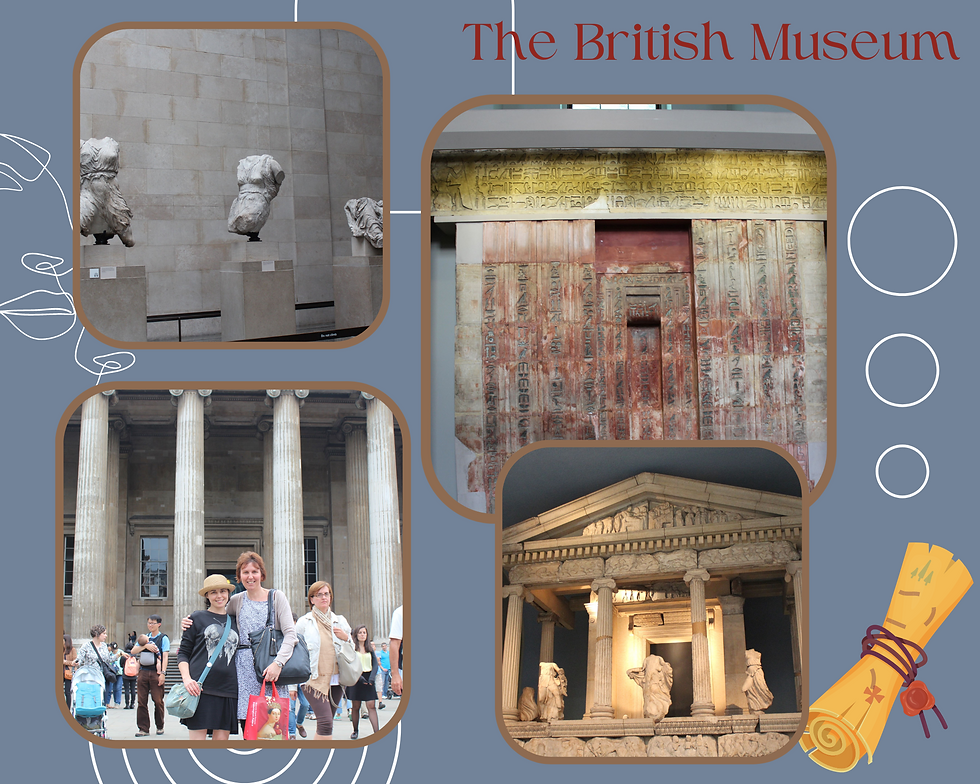
The museum houses over eight million works that showcase human history, art and culture. It was first opened to the public in 1783 and has stood the test of time, although many items were temporarily relocated in 1942 during WW2. The original natural history artefacts are now in the Natural History Museum and books and manuscripts in the British Library.
As with my first visit in 2011, I was in awe of the sheer size and depth of the collections of the British Museum. For a history nerd like me it’s the ultimate experience, but the other part of me struggles to deal with the fact that there are thousands of artifacts in the museum that where plundered or misappropriated that the Museum refuses to return to their rightful owners. This feels like an attempt to hold onto a colonial past when some restorative justice by giving back the hoarded objects might be some acknowledgment of historical wrongdoings.
My cheeky weekend in London experience
It was a busy weekend, but I was grateful for the break from working and the chance to explore London again and catch up with KP and AD. I appreciated that I have friends in London I could hang out with who made the time out from the work project even more enjoyable. This was the first time - after four previous trips - that I walked more than I took the Tube. I found this gave me a new appreciation for London and a greater sense of perspective.
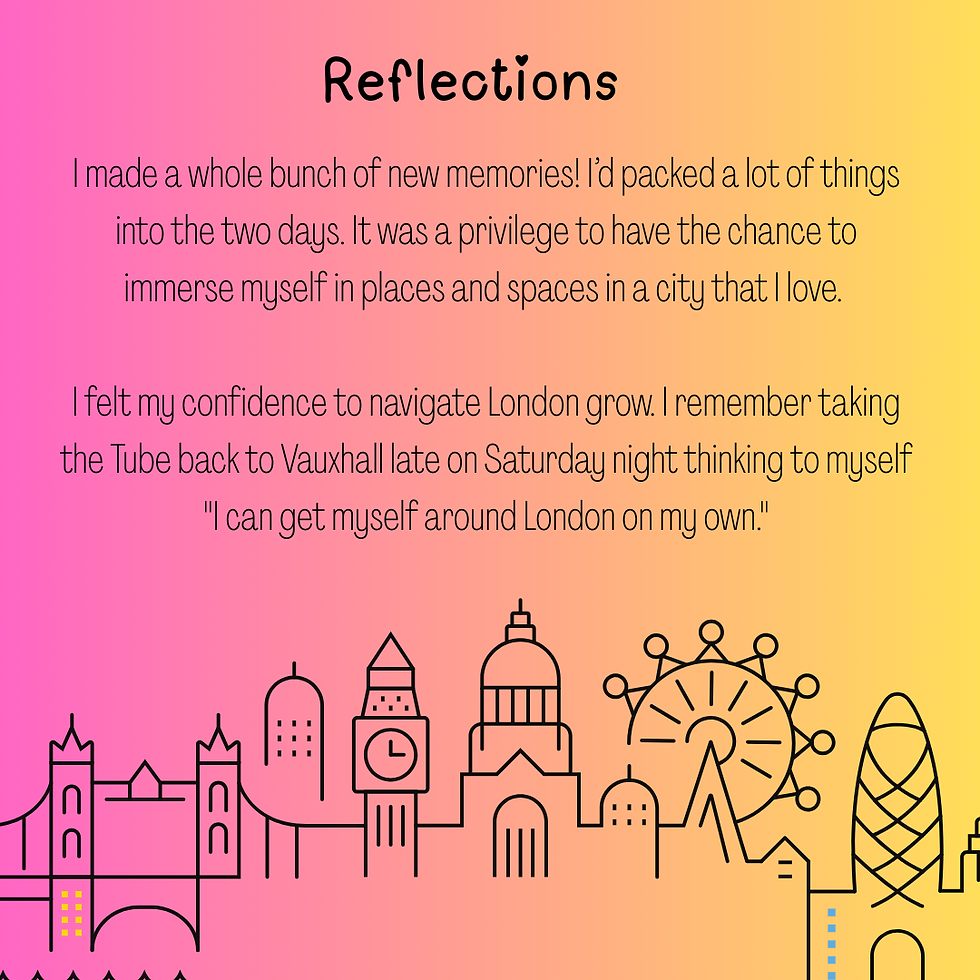
If you're interested in reading about the work project that prompted the trip, read on... For more London adventures, check out the post on my next visit to the city in 2018. Posts to come on my 2022 and 2023 stints in London for work.
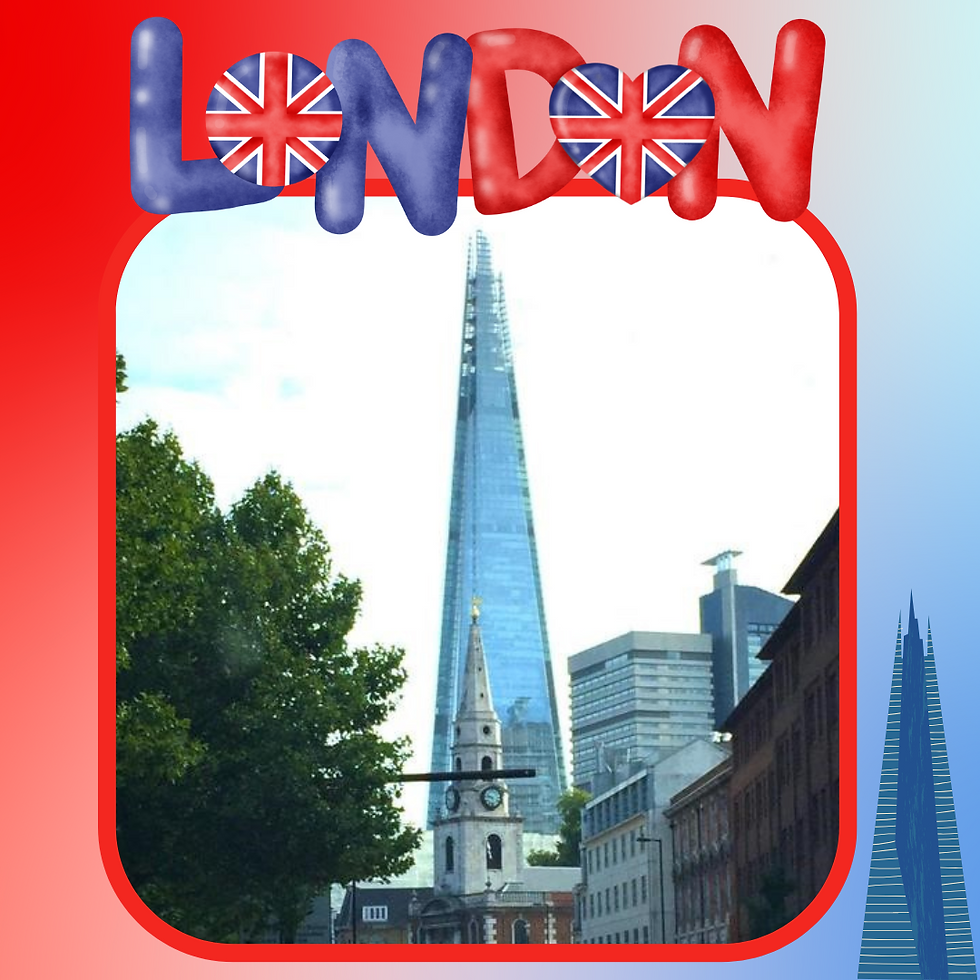





Comments